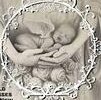
A new baby is an exciting time for any family. And while everyone and their mom is going to buy you a lot of clothes for your little bundle of joy, it’s important to think about what your infant really needs. Here’s an essential baby clothing checklist for new parents:
The most important consideration when it comes to purchasing newborn outfits is comfort. Babies spit up and poop frequently, so you’ll want to stick with soft, comfortable fabrics that will be gentle on their sensitive skin.
Avoid any clothes with seams, tags or rough edges that could irritate the skin. Look for onesies and pajamas with snap bottoms, which will make diaper changes easier. You may also want to purchase a few all-in-ones or jumpsuits that cover the entire body and include mittens or feet so your baby stays warm and cozy. Footed pajamas are also great for babies to wear around the house because they’ll be able to roll up the sleeves and pants easily for playtime and naps.
A couple of fleece jackets, vests or hoodies are essential winter items for babies. Keep in mind that babies tend to overheat easily, especially when they are sleeping or at the mall, so dress them in layers and take off clothes if they get too hot.
If you decide to go with all-in-ones or jumpsuits, make sure the legs have snaps or a zipper (not button snaps) so they’re easy to get on and off for diaper changes. A hat is another essential item for cold weather, but don’t get one with a brim that will rub against the head or face. Babies’ heads can be very sensitive, so opt for a wide-brimmed hat or cap.
You’ll also want a few pairs of soft and comfortable pants, socks, underwear and a few shirts that will be worn with the all-in-ones or jumpsuits. You’ll want to make sure you have plenty of outfits in the correct size because babies grow fast.
Lastly, you’ll want to stock up on bibs and washcloths. You’ll be washing and rewashing a lot of laundry in the early days, so it’s good to have plenty of reusable cloth and vinyl bibs on hand. You’ll also want a few washcloths made with organic cotton or bamboo to help your baby stay clean and green.
The convention of having separate sections for girls’ and boys’ clothing must be rethought, Ms. Red-Horse says. It’s not helpful to have gender stereotypes imposed on infants when they’re still developing. Some retailers have already begun to change the way they present their baby products, such as COS and H&M with their lines of unisex and gender-neutral clothing. And Gap has a hub that features its neutral-colored clothes.
As you shop, pay attention to the label on each piece of baby clothing to see what materials are used. Many babies have sensitive skin, so it’s best to use organic and natural fabrics as much as possible. Consider the environment, too—look for sustainable and ethically made clothing, which is a growing trend among young families.
